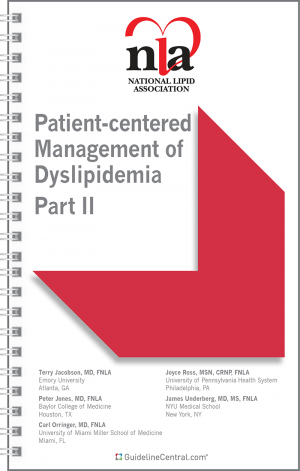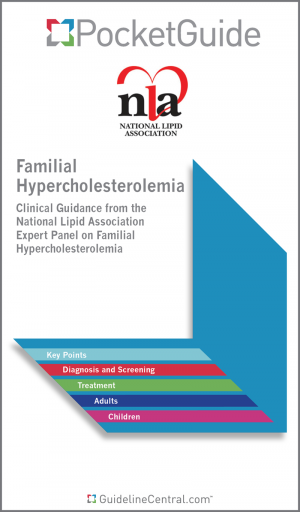Patient-Centered Management of Dyslipidemia: Part 1
- 18 pages
- Spiral Bound
- 80# Aqueous Coating
- 4.25" x 7.25"
- Ships in 5 – 10 business days
- Key Points
- Risk Assessment
- Treatment Recommendations
- Algorithms
- Model of Steps in Lifestyle Therapies
- Progression of Atherogenic-Cholesterol-Lowering Drug Therapy
- Tables
- Criteria for Classification of ASCVD
- Major Risk Factors for ASCVD
- Risk Calculators
- Criteria for ASCVD Risk Assessment, Treatment Goals for Atherogenic Cholesterol, and Levels at Which to Consider Drug Therapy
- High or Very High-Risk Patient Groups
- Sequential Steps in ASCVD Risk Assessment
- Classifications of Cholesterol and Triglyceride Levels
- Drugs That May Elevate LDL-C or Triglyceride Concentrations
- Risk Indicators (Other Than Major ASCVD Risk Factors) That Might be Considered for Risk Refinement
- Diet Characteristics and Diseases/Disorders/Altered Metabolic States That May Elevate LDL-C and/or Triglyceride Concentrations
- Criteria for Clinical Identification of the Metabolic Syndrome
- Treatment Goals for Non-HDL-C, LDL-C, and Apo B
- The intensity of Statin Therapy
- Apheresis
- Available drugs and Their Effects on Lipid Metabolism
- Agents for Homozygous Familial Hypercholesterolemia
- For purchases under 100 in quantity, we suggest placing the order directly through the website.
- We offer group/institutional licenses for multi-user accounts (discount amount varies depending on the number of users).
- We are proud to offer special discounts to medical schools, training programs, students and more.
- We offer bulk purchase discounts based on number of copies and number of titles.
Contact Us for more details
Description
This resource is for informational purposes only, intended as a quick-reference tool based on the cited source guideline(s), and should not be used as a substitute for the independent professional judgment of healthcare providers. Practice guidelines are unable to account for every individual variation among patients or take the place of clinician judgment, and the ultimate decision concerning the propriety of any course of conduct must be made by healthcare providers after consideration of each individual patient situation. Guideline Central does not endorse any specific guideline(s) or guideline recommendations and has not independently verified the accuracy hereof. Any use of this resource or any other Guideline Central resources is strictly voluntary.


